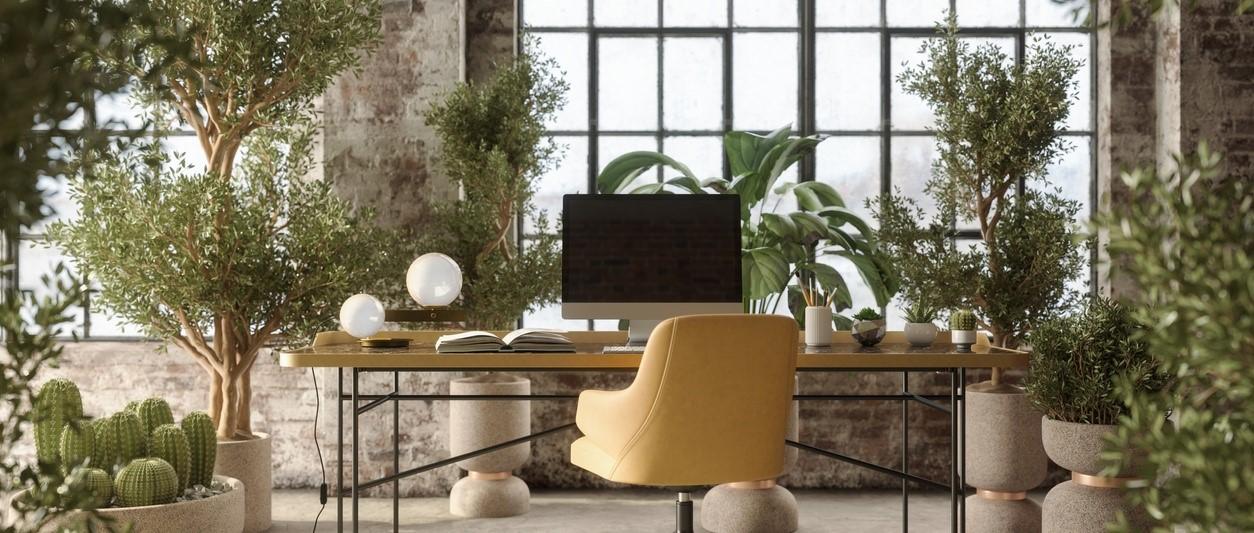
National Houseplant Week: Health benefits of biophilia and plants
Peer reviewed by Dr Krishna Vakharia, MRCGPLast updated by Noella Pio KivlehanLast updated 11 Jan 2024
Meets Patient’s editorial guidelines
- DownloadDownload
- Share
- Language
- Discussion
Getting a breath of fresh air has been sage advice for centuries to those needing some moments of calm and clarity. Taking a walk and getting among greenery in open spaces is now proven to boost mental health and improve wellbeing. A way to achieve this, both in the home and workplace, is through biophilia - the term used to describe getting closer to nature. We explore how you can invite nature - and its benefits - into your life, your home, and even your workspace.
In this article:
Continue reading below
Bringing nature into our homes and workspaces can immediately make us feel less stressed and anxious1. In an increasingly stressful, populated, and urbanised world - where most of us live in urban areas2 - these so-called biophilic indoor environments are needed more than ever:
What is biophilia?
Biophilia literally translates to 'love of life or living things'. This word was first used by famed psychologist Erich Fromm but was made popular by Harvard University biologist Edward O Wilson, who wrote the book Biophilia in 1984.
The idea is that human's love for and desire to be with nature comes from an inherent, biologically driven need to interact with other forms of life, such as plants and animals.
For instance, Wilson believed that humans love flowers because for many plant species, flowers signal that fruit, a known source of nutrients for early mankind, would be arriving soon. Also, our affection for baby animals suggests that connecting with animals, and protecting the most vulnerable of them, gave early people an evolutionary advantage.
Continue reading below
Why does it help, and how does it work?
Nature has been widely shown to benefit mental health and wellbeing, and is simply our proper place in the world, according to Dr Peter James, assistant professor of public and environmental health.
James believes that we can better recover from stress and improve our mental health and function in natural settings, because that’s where we are meant to be.
Biophilia works on many levels. Psychotherapist Laura Duester says: "It allows us to connect with the world around us, be more mindful, and switch-off from anxious or difficult thoughts."
There are many sensory inputs which can be calming and provide pleasure, says Duester, like looking at trees, smelling flowers and hearing birdsong. "Being in the sunlight increases our bodies vitamin D, and getting outdoors is also fun, such as when we enjoy splashing in puddles, sitting in the sun, or stepping on crunchy leaves."
The benefits of vitamin D have long been noted. Nicknamed the 'sunshine vitamin, it is made by the skin directly from sunlight, and plays a major role in the normal function of the immune system and in bone, tooth, and muscle health.
"There is lots of research which shows that nature has substantial physical and emotional health benefits," says Duester. "When people experiencing stress spend time in natural environments, they experience more positive emotions and a decreased physiological stress response3".
Research also shows that people who regularly enjoy nature are happier and more satisfied with life and feel less depressed and anxious4.
What is the best way to get biophilia in your life?
Outdoors
Think in colours green, blue and yellow:
Spend time in green spaces, like parks or forests.
Enjoy blue spaces, such as rivers, beaches, or banksides.
When the yellow sunshine's out, get outdoors, even to just sit in a garden, balcony, or doorstep. But take steps not to burn.
"Use your eyes and ears," says Duester: “Whether it’s bird-watching, growing scented herbs, forest-bathing or hiking in the mountains, find out what works for you and prioritise it. Even if you're walking in a city, try and enjoy urban plants and wildlife."
At home
It's not always possible to get outdoors in nature, but research suggests that we can get similar benefits when we bring nature into our homes.
One study found that filling a room with houseplants and other natural materials, having significant window space showing daylight and a natural view, or both of these things combined can instantly reduce stress and anxiety1.
Duester also recommends gardening or growing fruit and vegetables at home. "Or indoors, you might enjoy looking at trees through the window, or placing a simple indoor plant on your desk. Even watching nature documentaries and listening to nature soundscapes can be effective."
At Work
In 2019, the World Health Organization (WHO) officially classified workplace burnout - the feeling of exhaustion caused by ongoing stress at work - as an occupational phenomenon5.
Given many of us spend around one third of our lives in an office, there's been increasing focus on making the work environment as healthy and attractive as possible.
One study looked at the effects of drab, plant-free working environments over 10 years6. The results showed that employees were happier and 15% more productive when workplaces are filled with a few houseplants.
Indoor greenery acts as a natural air purifier, letting everyone in the office breathe a little easier, which allows them to relax better.
We have control over home-offices, but what about shared office spaces? Increasingly, interior designers and architects are turning to nature to create the healthiest workplaces, as Sheela Shukla of Building Design Partnership (BDP) explains:
"The WELL Building Standard™ gives guidance on how many plants to use in an area, and other ways to integrate nature. For example, we consider indoor planting, calming colours, textures, shapes, forms, imagery, sounds, lighting, and views to external areas.
"An Urban Greening Factor, such as that in the London Plan, also evaluates and quantifies the amount and quality of natural, healthy greening measures in offices."
Continue reading below
Further reading
Patient picks for Mental wellbeing

Mental health
New Year, New Me: Why reinventing yourself in 2025 might be bad for your mental health
Whether you decide to make New Year resolutions or not, January often feels like a good time to better yourself. You might set goals to exercise every day, be more productive or take up a new hobby - which you hope will turn you into a more successful, well-rounded people. But can trying to reinvent yourself at the start of a New Year actually harm your well-being?
by Victoria Raw

Mental health
How to look after your mental health this winter
The first months of the year can be a miserable time. Holiday festivities are over, money is tight and pressure to keep up your resolutions is mounting. This can lead to feelings of anxiety, depression and even failure. For many, these symptoms begin even earlier as the seasons change from autumn to winter. According to the Royal College of Psychiatrists, around every 3 in 100 people suffer from significant seasonal depression, which can interfere with daily life. We explore why winter leaves so many feeling down and how you can tackle it at home.
by Georgia Gallant
Article history
The information on this page is peer reviewed by qualified clinicians.
11 Jan 2024 | Latest version
11 Jan 2024 | Originally published

Ask, share, connect.
Browse discussions, ask questions, and share experiences across hundreds of health topics.

Feeling unwell?
Assess your symptoms online for free
Sign up to the Patient newsletter
Your weekly dose of clear, trustworthy health advice - written to help you feel informed, confident and in control.
By subscribing you accept our Privacy Policy. You can unsubscribe at any time. We never sell your data.